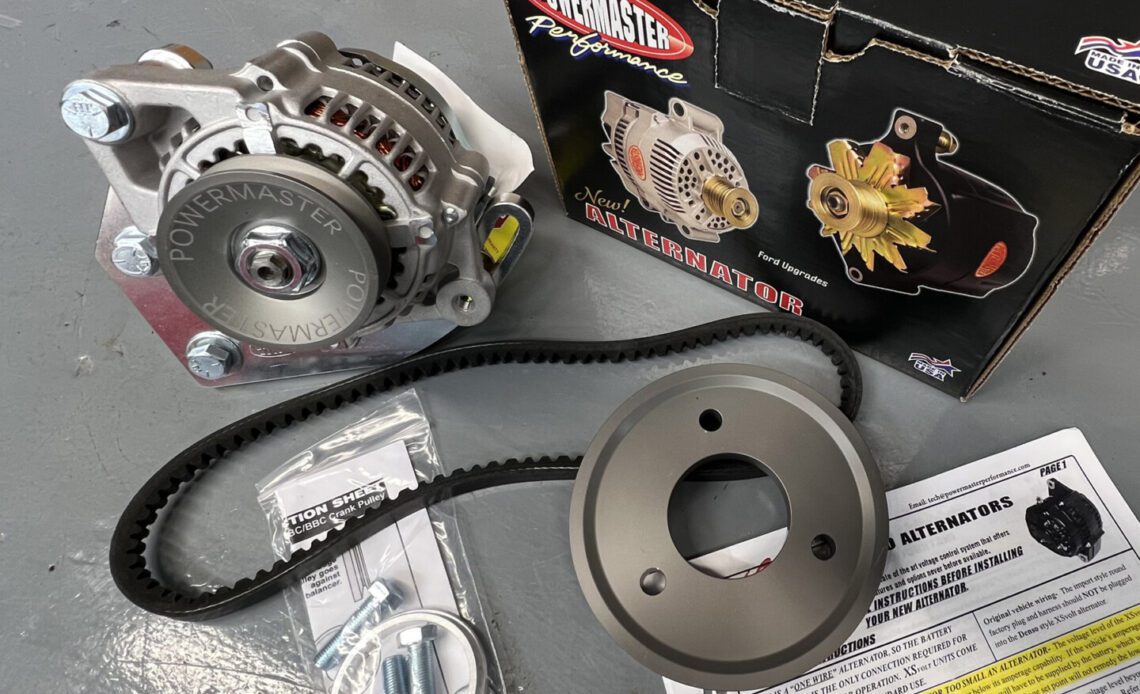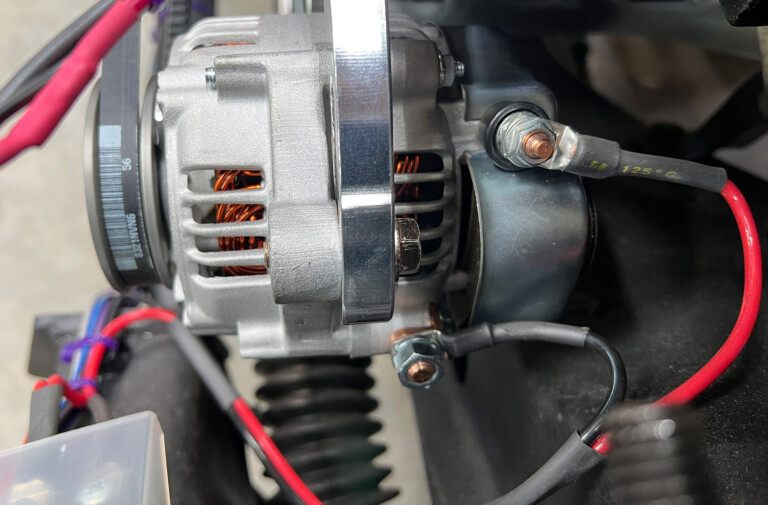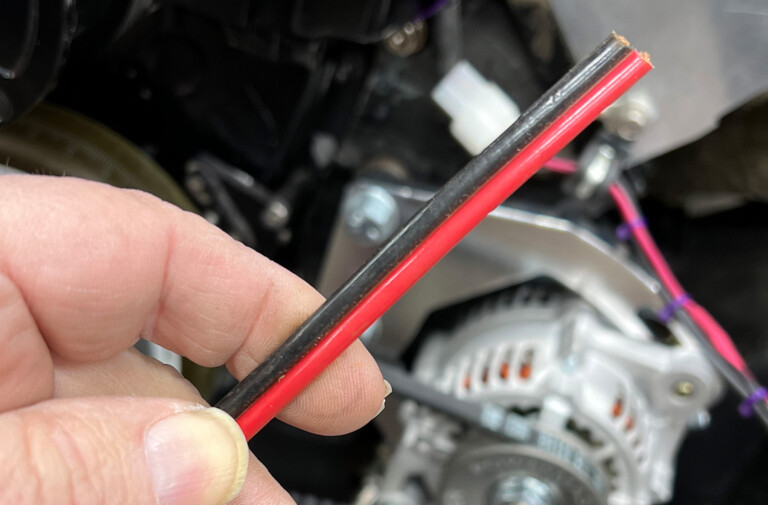Not that long ago, many drag racers solely used a charged battery to make a pass. Yes, the race car may complete a pass on battery juice alone, but anyone who has ever compared their overall performance with and without an alternator will tell you the difference is colossal.
Consider your capacitive discharge ignition (CDI) that converts your battery current to a high-voltage discharge (typically 400 to 500 volts primary voltage, plus a coil output of 40,000 to 60,000 volts at the spark plugs) — it’is easy to imagine why a battery cannot do this job alone.
Imagine Electricity As Water
You may know the old adage that electricity is like water flowing through a hose. Think of amperage as the size of the hose that the water flows through, voltage as equivalent to the pressure of the water flowing through the hose, and ohms as any resistance within the hose against the water.
Have you ever seen a battery with only one post? Then your alternator requires a charging wire and a proper ground. The alternator bracket connected to the engine block is insufficient. All Powermaster alternators feature a dedicated grounding lug for good reason. They also specify using the same gauge ground wire as your lead wire for a proper circuit.
We spoke to Ed Law, Technical Specialist at Powermaster Performance, who added his insight to the hose/water analogy.
“The fundamentals of a direct current (DC) power system can be calculated with averages. Imagine your alternator as basically a water pump. It pumps electricity to your battery, which is a bucket (storage) for electricity. Your battery should function as a reserve. You do not want to drain your battery with more electric demand than an alternator supplies. Yet, you also do not want to continually overcharge your battery, which would be the equivalent of overfilling your bucket — this can damage your battery.”
Out of the box, the alternator includes a Powermaster proof of performance tag from their extensive testing centers at the factory. With our alternator installed, the output at our battery matched their tag at 14.8 volts.
Volts Are Volts — Well…
Regarding 12- versus 16-volt DC systems, remember the aforementioned “bucket” analogy — with your batteries again being the bucket, your incoming charge voltage to the battery must be precisely matched to prevent damage.
Powermaster offers a number of mini and full-size alternators designed to output 12, 14, or 16 volts for properly charging different…
Click Here to Read the Full Original Article at DragzineDragzine…



